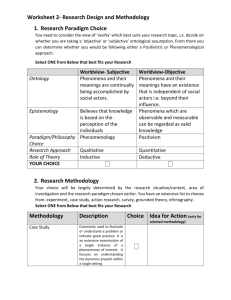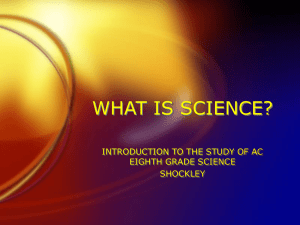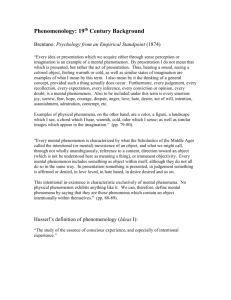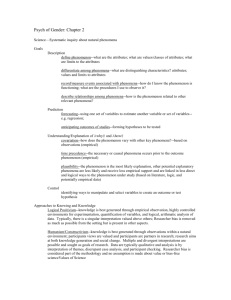SCOPE AND LIMITATIONS. FUNCTION What statistics does?
advertisement
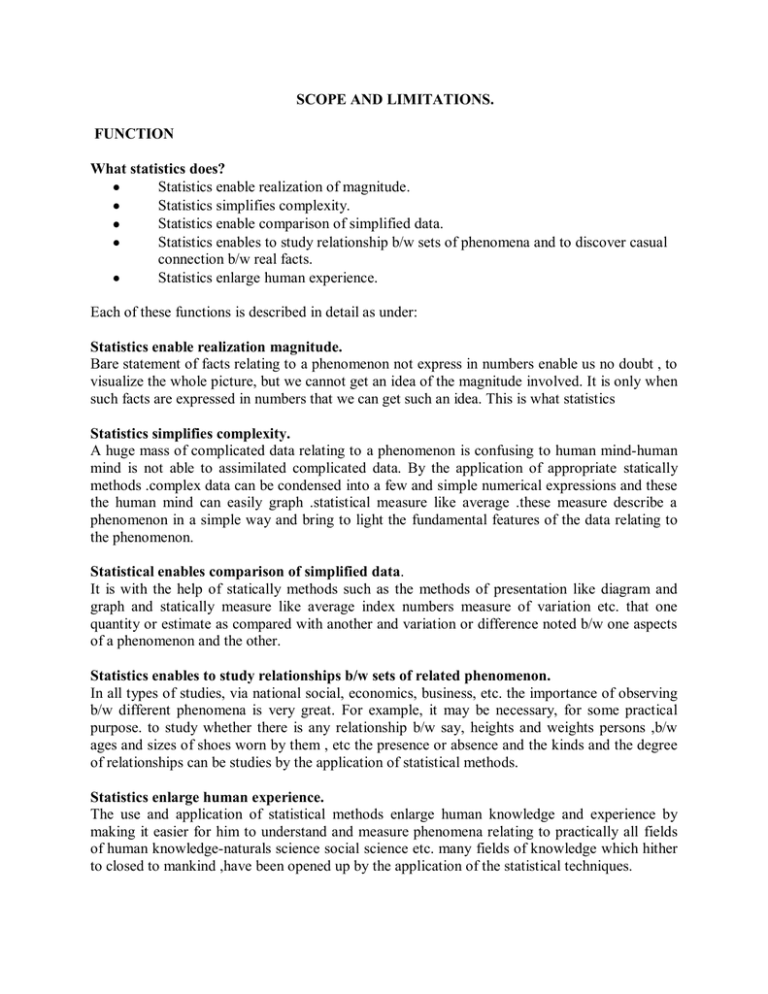
SCOPE AND LIMITATIONS. FUNCTION What statistics does? Statistics enable realization of magnitude. Statistics simplifies complexity. Statistics enable comparison of simplified data. Statistics enables to study relationship b/w sets of phenomena and to discover casual connection b/w real facts. Statistics enlarge human experience. Each of these functions is described in detail as under: Statistics enable realization magnitude. Bare statement of facts relating to a phenomenon not express in numbers enable us no doubt , to visualize the whole picture, but we cannot get an idea of the magnitude involved. It is only when such facts are expressed in numbers that we can get such an idea. This is what statistics Statistics simplifies complexity. A huge mass of complicated data relating to a phenomenon is confusing to human mind-human mind is not able to assimilated complicated data. By the application of appropriate statically methods .complex data can be condensed into a few and simple numerical expressions and these the human mind can easily graph .statistical measure like average .these measure describe a phenomenon in a simple way and bring to light the fundamental features of the data relating to the phenomenon. Statistical enables comparison of simplified data. It is with the help of statically methods such as the methods of presentation like diagram and graph and statically measure like average index numbers measure of variation etc. that one quantity or estimate as compared with another and variation or difference noted b/w one aspects of a phenomenon and the other. Statistics enables to study relationships b/w sets of related phenomenon. In all types of studies, via national social, economics, business, etc. the importance of observing b/w different phenomena is very great. For example, it may be necessary, for some practical purpose. to study whether there is any relationship b/w say, heights and weights persons ,b/w ages and sizes of shoes worn by them , etc the presence or absence and the kinds and the degree of relationships can be studies by the application of statistical methods. Statistics enlarge human experience. The use and application of statistical methods enlarge human knowledge and experience by making it easier for him to understand and measure phenomena relating to practically all fields of human knowledge-naturals science social science etc. many fields of knowledge which hither to closed to mankind ,have been opened up by the application of the statistical techniques. SCOPE OF STATISTICS The history of statistics shows in the ancient times the scope of statistics was limited. Censuses of population and wealth were conducted in those days to determine the man power and materials wealth for the purpose of waging wars. With the passage of time the scope of statistics became wider and wider. Thus the statistical methods bean to be used in physical and then in other social science “Today, there is hardly a phase of human activity which does not find Statistical devices at least occasionally useful. Economics anthropology psychology. Agriculture, business and educationall lean heavily upon statistics. The medical research worker often must rely upon statistics to determine the significance of his result. It should of course be added that the musician, the artist, the actor and the writer to fiction would rarely have occasion to statistics, but even here certain data sales, box-office receipts and trends of popular taste might be apropos. “Statistics methods are applied to the result of physical chemistry and biological experiments and observation as well to result to obtain in Social and economics investigations” It is clear from the above that statistical analysis includes in its fold all quantitative analysis to whatever field of inquiry they might relate. The scope of statistical methods is stretched over all those branches of human knowledge in which a grasp of the significance of large numbers is looked for. The scope of statistical methods therefore, is wide the limiting factor being its applicability to studies of quantitative e character only. I other word. The statistical, methods can be used in studding and problem as aspect of a problem relating to any phenomenon, provided the problem or its aspects are susceptible to numerical measurement. LIMITATIONS OF STATISTICS Despite its power, essential use fullness and universal applicability statistics has its own limitation and imperfections, which are as under, 1. 2. 3. 4. 5. 6. Statistics does not study individual. statistics does not study qualitative phenomena statistics data do not reveal the story statistical results are not always unquestionable statistical laws are true on the average or in the long run statically result might leads to fallacious conclusions if they are quote without their context or If they are manipulated 7. Statistical data are liable to be misused easily. Each of these limitations is discussed in detail below: Statistics does not study individuals. Individuals facts and figures are of importance to individuals only statistics does not deals with them .it deals with mass phenomena and therefore, throws light on the whole of a given group. Statistical deals with aggregates, though for purpose of analysis these aggregates are very often reduced to single figures like average, percentages, Statistics does not study quantitative phenomena The statically methods can be applied to the study of those problems only that are capable of quantitative expression, i.e., it is not applicable to the study of those facts that are not quantitatively measurable, for example attributes like honesty, healthy skills etc be measured weight in figures. Statistical data not reveal the entire story Statistical data collected relating t a problem under study do not reveal the entire story of the problems. This is because many problems are affected by factors which are in capable of statistical analysis. Therefore it. Is not always possible to examine a problems I all its manifestations only by the statically of a country’s culture, philosophy or religion. “It is certainly important I statistical investigation not to forget that the data do not tell everything, and in their summarized, reduced form, they leave out a lot of information that may be importance “. Tippet. Statistical results are not always unquestionable Statistical results are more in the nature of estimate and probabilities than exact statement. The statistical methods are one of the several methods of studying problems. It helps us in studying trends, in forming an idea of the probabilities, in knowing how a given phenomenon has been behaving generally necessarily unquestionable and reliable. Statistical laws are true on the average or in the long run. That is, they are not true in their entirety-they are statements of long-term tendencies, and, therefore, cannot be considered stables. Statistical laws of physical science are. This is because statistics deals with phenomena which are affected by a multiplicity of causes. And it is not possible to study statically the effects of each of those causes to factors separately, as it is possible under the experimental methods. Because of this limitation, conclusion arrived at are not perfectly accurate and consequently the same conclusions cannot be arrived at under similar condition at all times. Statistical results might lead to fallacious conclusions they are quoted without their context or if they are manipulated Statistical results are true only in a particular context, if the context is absent, we cannot be sure of their validity. E.g. if the average profits earned by two firms are over the past few years are quoted, and incidentally, m the averages happens to be identical quantities, the conclusions may be drawn that both the firms are doing equally well. But if the actual profits earned by each of the two firms during the period were examined, it may be found that the profits of one firms is going up year by year while those of the other are going down by down. Statistics are liable to be misused easily Any person can use statistics and draw any type of conclusion he likes they may be used by anyone to make a worse case appears to be a better case. Like medicines in the hands of quacks, statistics can be easily misused by the inexpert, statistical data can be scientifically handled only by those who have expert knowledge of statistical methods.
